Mountain bikers: pump up your pedaling this winter
This piece was written for TrainingPeaks.com, but I hope LLB readers will dig it.
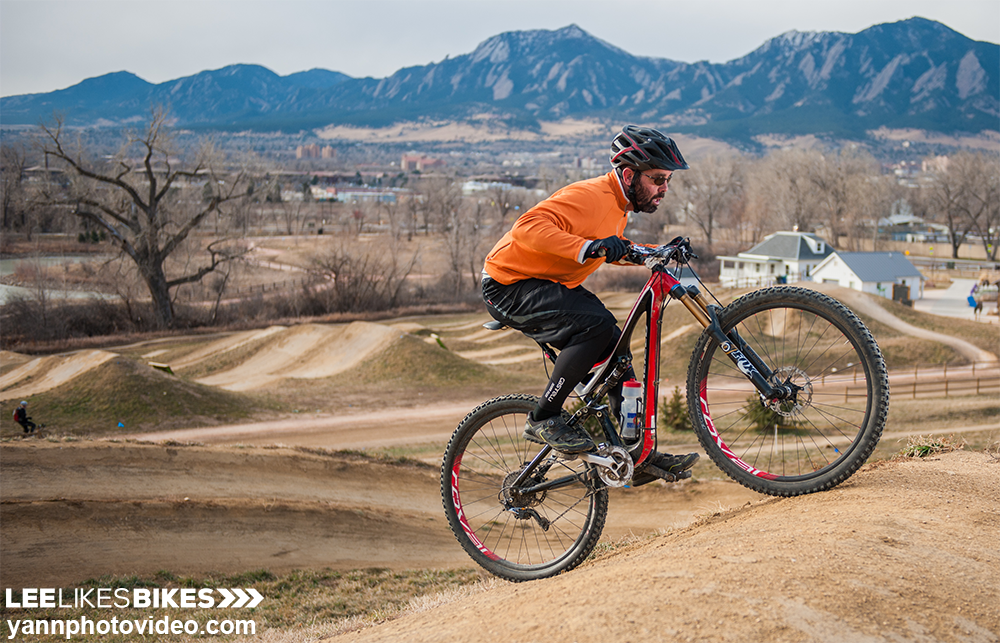
Man does not live on the trainer alone. If the conditions are nice, pin it outside! Sprint training up the slalom track at Valmont Bike Park in Boulder, CO.
So many mountain bikers do their work in the winter — sitting and spinning, mostly — then they hit real trails and are shocked. Why aren’t I flying up these rocky climbs? Why I am I working so hard? Why am I falling down?
Mountain biking is more complex than road riding. Never mind all the turning, hopping and dropping: The pedaling is more involved too.
This article strives to help your winter pedaling training better prepare you for off-road riding. The physiological concepts come from my pedaling fitness coach, Lester Pardoe at the Boulder Center for Sports Medicine. The technical concepts come from my experience as a busy skills instructor, dad and business owner. I need to wring every gram of benefit out of every minute on the trainer (and I need it to be interesting).
Equip yourself
You can train effectively inside or outside.
A trainer with a power meter is the classic winter training tool. If you don’t have a power meter, you can measure effort with heart rate, speed or perceived agony.
If you’re a mountain biker you’d probably rather be outside. Check out the Stages power meters, which are relatively inexpensive and fit almost all mountain bikes. My Stages is mounted to a Shimano XT crankarm. It easily switches between my Specialized Camber trail bike, Stumpjumper rigid hardtail and P3 dirt jump bike. Yes, you can put a Stages on your fatbike.
Hit the sweet spot
Sweet spot is the effort zone just below threshold, where you get maximum aerobic benefit with minimum stress on your body. That is sweet — and perfect for winter base training.
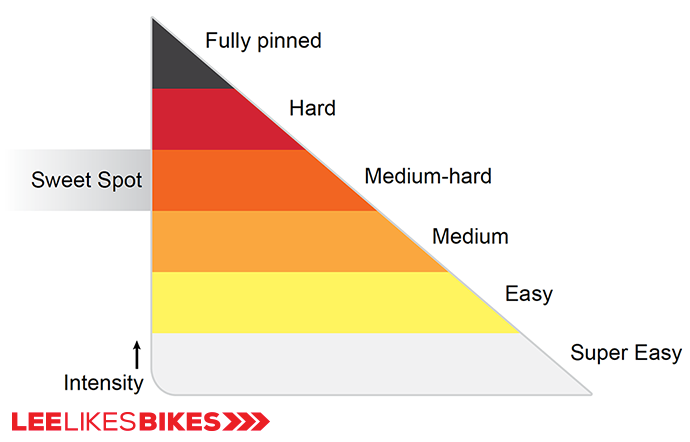
Intensity levels from the Pump Up the Base off-season training program.
Sweet spot intervals increase your ability to ride faster, longer and easier. Try to maintain 90 percent of your threshold effort. You should be able to talk, but only in short statements, and you should be able to finish your intervals with good quality.
A 12-week program might start with six three-minute intervals and build to three 20-minute intervals. Take it one step at a time, and you’ll see big results.
Pin it!
Very few endurance athletes sprint in training, and that’s a big mistake.
1) If you don’t practice sprinting, how do you expect to sprint well when money (or your body) is on the line?
2) The higher your 100 percent, the higher your 50 percent.
3) Technical climbing, accelerating out of turns, gaining speed for big jumps and other MTB adventures rely on bursts of clean, efficient power. The more power you can make, the better (and safer) you’ll ride.
4) Short sprints are easy on your body. You can add them to winter training without burying yourself.
5) Sprinting is fun!
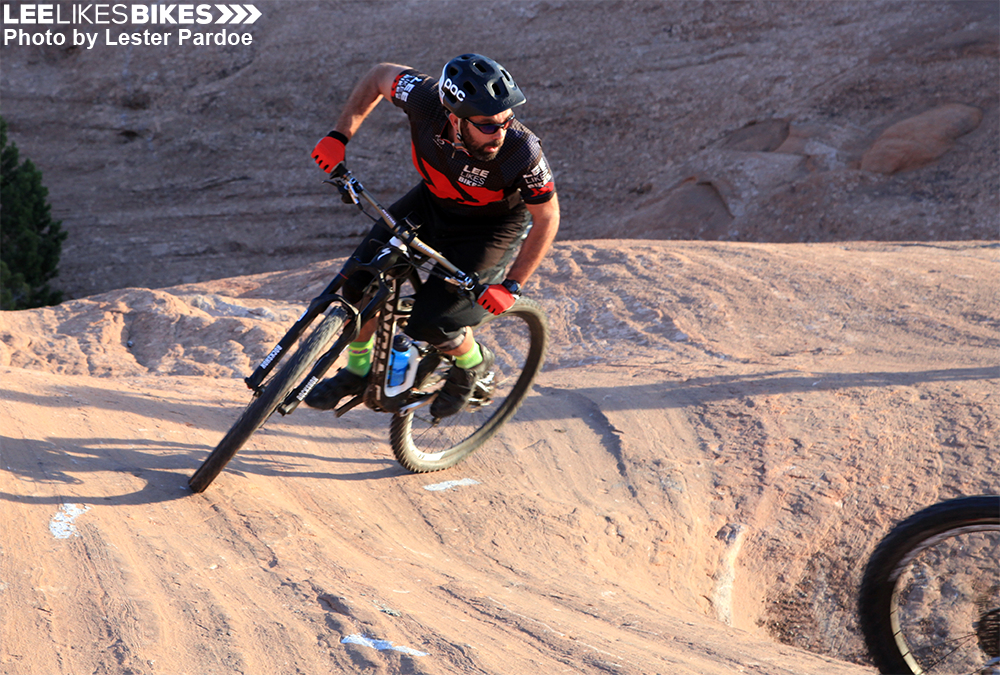
On a steep climb with a tight turn and serious consequences? Pin it! The more powerful and balanced you are in training, the more you’ll enjoy riding world class trails like Slickrock in Moab, UT.
In between sweet spot intervals (or within the longer ones), throw in some maximum efforts. Sprint as hard as you possibly can for just a few seconds. As soon as your power or speed tapers off, that interval is done.
How many watts can you hit in five strokes? What’s the highest wattage you’ve ever seen? Destroy those numbers!
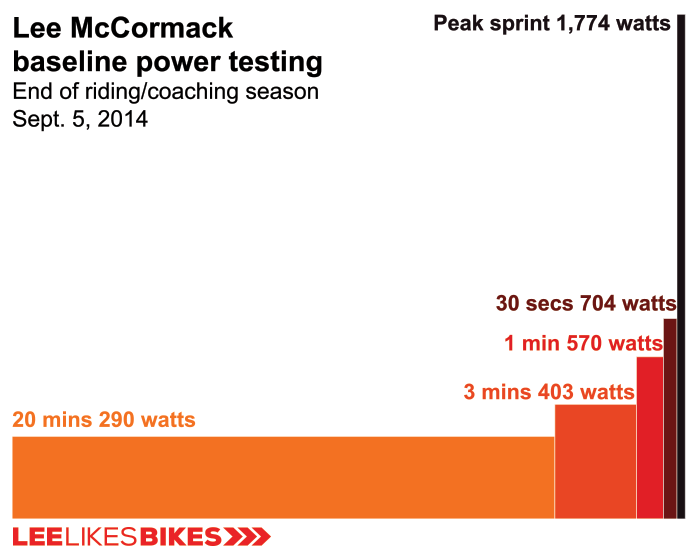
Since I started training like this about five years ago, my measured max sprint has increased from 1,000 watts to almost 1,800 watts. My 20-minute power had increased from less than 200 watts to almost 300 watts. This stuff works!
Learn to pedal
As cyclists we spend a lot of time pedaling. As mountain bikers, pedaling is complicated by rocks, logs, roots and other madness. Embrace smooth pedaling as a skill, just like cornering or pumping, and get great at it.
The trainer is the ideal place to focus on pedaling technique. As your foot passes 9 o’clock, drop your heel and push across the top of the stroke. This simple trick lengthens your power phase and minimizes the opposite dead spot: critical for maintaining smooth power up technical climbs. By the way, it works with flat pedals as well as clip-ins.
Stand up
When you try to ride up a steep rock, and your butt cheeks are clamped to your seat, your rear wheel slams into the rock. Depending on your speed and energy level, you slow down, stop, pedal extra hard or fall off your bike. Not ideal.
To cruise right up technical climbs, learn to maintain your perfect pedal stroke both in and out of the saddle. When you get off your butt, stand tall and drive all your weight into the pedals. Keep your hands neutral, and actively match the angle of your bike to the trail. Master this skill before that bucket list trip to Moab, UT.
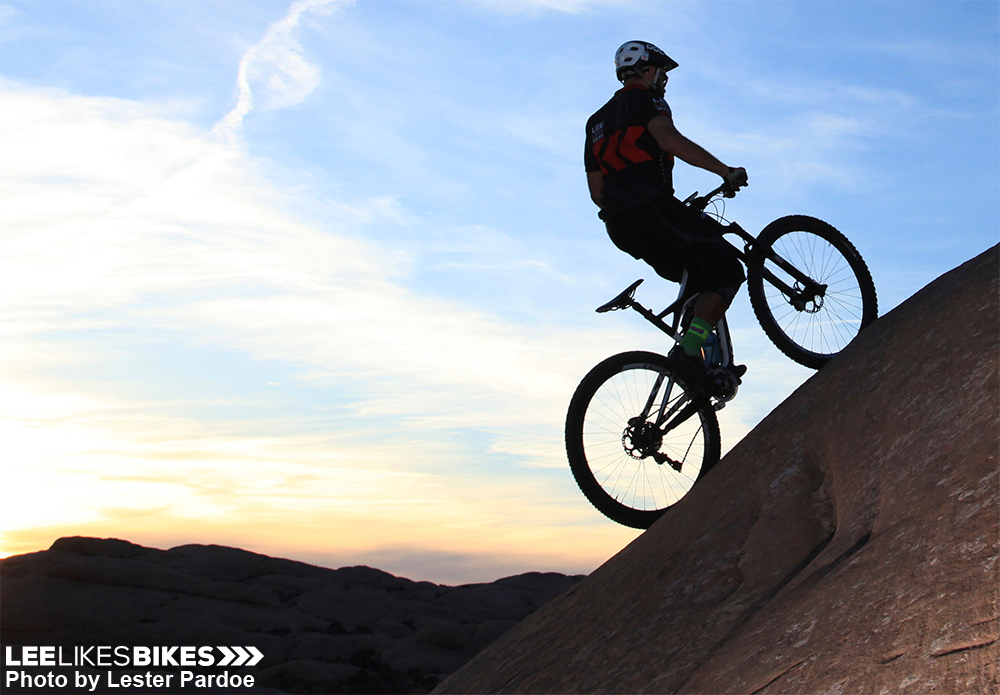
To tackle steep trails like Slickrock in Moab, UT, you need power, balance and the confidence to use everything you have. Believe it or not, you can practice this on the trainer.
Spin faster
How fast can you spin your crankarms? 80 rpm? 100? That’s not enough.
In some of your sprints, use a very easy gear and spin as fast as you possibly can. Don’t worry about looking pretty; crush your pedals and make your feet fly.
When you can crank 120, 150 or even 200 rpm, cruising at 90 will feel easy. And when you need to burst up a slickrock face, you’ll get your power from leg speed rather than brute force. This enables higher wattage and saves your legs for longer, faster and more comfortable rides.
Spinning 200 rpm on flat pedals (with regular shoes).
Up, down, repeat
If you want to clean technical climbs, you have to make your sit/stand transitions seamless.
Add “up/downs” to your sweet spot intervals. Pedal five strokes sitting, then five standing. Try to maintain constant cadence, power and effort. Stand tall. Keep your hands weightless (Tea Party fingers!). Repeat as long as you maintain quality.
Take the same skill to a rocky or rooty climb. Sit in the smooth sections. Stand in the bumps. You’ll be stoked.
Visualize radness
Shredding videos stimulate your brain while your body is getting stronger. Radness is relative: Watch riding that seems awesome, but that you can imagine doing. If you’re a road or XC rider, watch enduro or downhill videos. If you’re an enduro or downhill rider, try motocross videos. (I enjoy the Moto series. No. 6 just came out. Braaap!)
What are those riders doing? How does it feel? The closer you can match the riders’ perspectives, the more you’ll be getting the same practice they are (and the more fun you’ll have).
Start now!
For a proven 12-week off-season program that incorporates these training concepts plus game-changing pedaling drills, check out Pump Up the Base.
Know more. Have more fun!
Join the leelikesbikes mailing list:

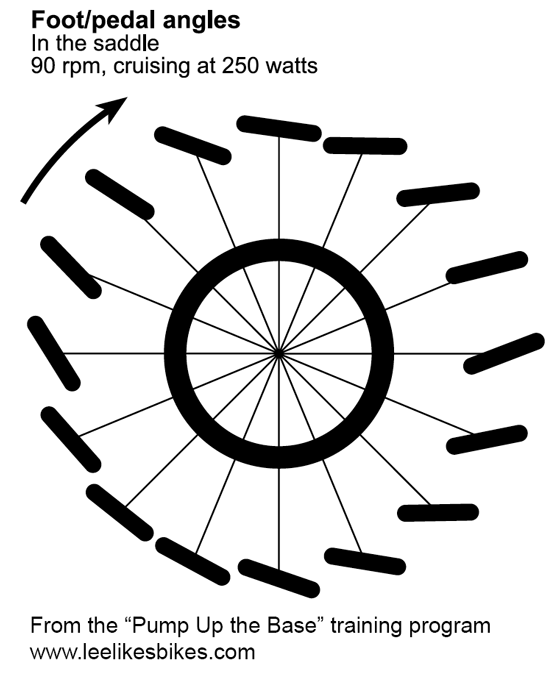
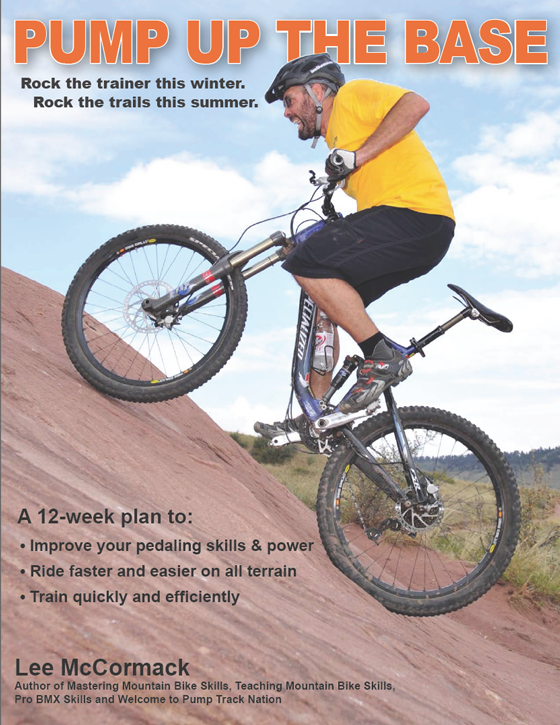
Leave a Reply
Want to join the discussion?Feel free to contribute!